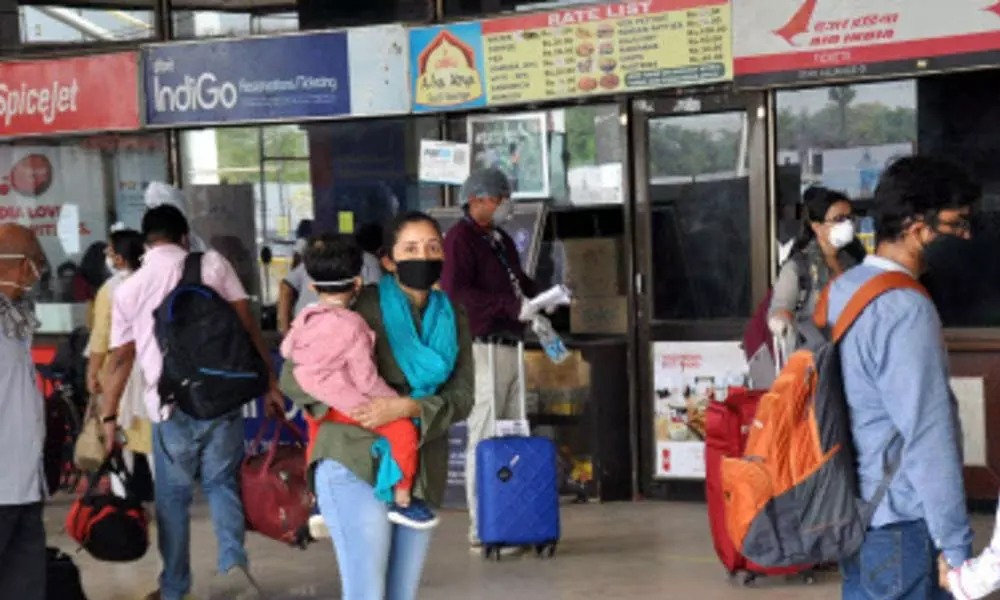Air travel unlikely to return to pre-Covid levels until 2024
image for illustrative purpose

In 2020, industry revenues totalled $328 billion, around 40 per cent of the previous year's. In nominal terms, that's the same as in 2000. The sector is expected to be smaller for years to come; we project traffic won't return to 2019 levels before 2024. Business travel will take longer to recover, and even then, we estimate it will only likely recover to around 80 percent of pre-pandemic levels by 2024. As the pandemic subsides, the rise in leisure trips will outpace the recovery of business travel.
Airlines should re-evaluate the economics of their operations, especially long-haul flights. Leisure travellers, even those travelling in premium classes, are more price sensitive and may choose an indirect routing. This large gap between nonstop pricing and connect pricing may need to narrow.
With business demand subdued, economics favour larger aircraft flying less frequently. Airlines may find that larger aircraft such as Airbus A350s or Boeing 777s - which have lower unit costs - become the base of the long-haul.
The Airline industry collectively amassed more than $180 billion worth of debt in 2020, a figure equivalent to more than half of total annual revenues that year. Airlines can work with regulators to set standards across a gamut of issues. These could include committing to reductions in greenhouse-gas emissions in return for more labour flexibility; increasing the cash-on-hand requirements to make airlines more resilient against future shocks; more balanced value sharing between airlines and other sectors such as airports; or changes in the ownership caps to allow greater inflows of foreign capital, reducing the reliance on state capital further down the road. Before the pandemic, airlines spent roughly 5 percent of their revenue on IT. This is relatively low compared with other sectors. By means of comparison, the retail industry spends around 6 percent on average, and financial services 10 percent. Airlines could consider stepping up IT and automation investment now. For example, airlines can respond to the quicker recovery of domestic and short-haul flights by investing in direct sales and owning the customer relationship. The pandemic has sped efforts by airlines and airports to integrate digital passenger services, information and document checks, while the race is on to deploy "contactless" processes and digital health passes with Covid-19 vaccination and test certificates. If finances permit, carriers can consider acting countercyclically: locking in orders for new aircraft or confirming operating leases now when demand is low. Aircraft are a significant expense for an airline, making up 10 to 15 percent of a carrier's cost base.
Airports and airlines are united in the call for governments to partner with the industry to prepare to restart global connectivity when the epidemiological situation allows, and the unprecedented global vaccination effort offers a beacon of hope that a return to normality is a possibility in the near future.
Since the first vaccine dose was administered in late 2020, more than 450 million doses have been administered across more than 130 countries. The possibility that summer vacations abroad may happen this year is more likely than ever. Many industry surveys have shown that "vacation deprivation" combined with an upsurge in confidence in air travel provided by vaccination and safety measures should result in the number of people traveling outside of their countries will start this spring and significantly increase by mid-year.
One of the keys to supporting a sustained recovery will be the establishment of an interoperable health data trust framework to facilitate safe border reopening and cross-border travel. As such, ACI is supportive of any system which will allow testing and vaccination data to be shared consistently, effectively and in a way that protects the personal data of those that use it. Despite positive signs and prospects for recovery, Covid-19 remains an existential crisis for airports, airlines and their commercial partners. In this context, the current document seeks to highlight some key figures in terms of the impact of the Covid-19 pandemic on airport traffic and revenues and pathways to recovery. With the biggest vaccination campaign in history underway, we were seeing some positive signs and prospects for recovery. Both travellers and industry stakeholders are eager to resume traveling. Many industry experts forecast a surge in travel for the second half of 2021. Some are even referring to this potential increase as a 'post-war like surge' in travel.

